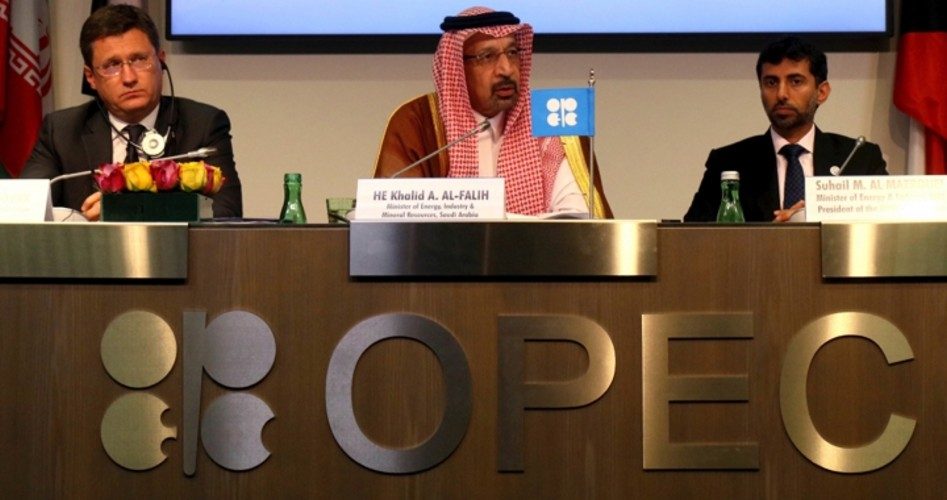
Crude oil prices rose nearly five-percent in a single day Friday, when OPEC, meeting in Vienna, failed to raise production as much as many feared.
The last time the price of crude oil for future delivery jumped this much was when OPEC announced its decision in November 2016 to cut production. That agreement, met at the time with much skepticism that the cartel could enforce it, was to remove about 1.8 million barrels a day of world supplies. Trading at $50 a barrel in early November 2016, crude oil for future delivery jumped to $57 a barrel by January 1, 2016.
Then reality, helped along by U.S. share producers, set in, with new supplies pushing crude oil futures down to $45 a barrel by July 2016.
The same scenario could play out once again: The rise in the price of crude is likely to be temporary only, as OPEC’s “birthing a mouse” will be perceived as having little or no permanent impact on oil prices.
The math is complex, but the outcome is nearly certain. OPEC’s initial announcement — tentative only as all members must sign on to it, along with several critical non-members such as Russia — was to raise production by a million bpd. But not every member of the OPEC cartel is able to increase production significantly. Iran is facing U.S. sanctions and is busy doing “workarounds” in order to sell its oil under the U.S. radar. Terrorists in Libya have taken about 500,000 barrels of its production off the market at least until repairs can be completed. And then there’s the unfolding catastrophe in Venezuela, which has seen its own production drop by nearly a million bpd in just the last year.
When all is said and done — which could take weeks if not months for the impact of the OPEC move to play out — the real “effective” new production will be between 600,000 and 700,000 barrels a day, according to analysts at Barclay’s. This was less than expected, fueling Friday’s nearly five-percent price jump.
The fundamentals in world crude oil supplies continue to shift in favor of U.S. oil producers. When OPEC tried to force them out of business by raising production in 2014, weaker producers went bankrupt, costing the U.S. economy some 200,000 oil field jobs. But along the way the stronger producers kept improving fracking technology, steadily lowering their break-even costs. Under OPEC’s production cut agreement — allegedly to reduce the crude oil “overhang” in world reserves and “rebalance” the oil market — U.S. producers became even more profitable.
With the help of strong global growth in demand for oil and unanticipated supply disruptions (i.e., Iran, Libya and Venezuela), that “overhang” shrank, giving OPEC all the reason it needed to begin raising production once again.
Even with capacity bottlenecks, U.S. oil producers continue to set records, with daily production of crude approaching 11 million bpd, ahead of Saudi Arabia’s production and soon to overtake Russia’s.
The contrast between a cartel and a free market is obvious. As Doug Lawler, chief executive of Chesapeake Energy Corporation, said:
We’re not running our business based on what OPEC does regarding supply. We just have to … focus on the technology and the innovation that helps us be efficient regardless of the price.
Ben “Bud” Brigham, founder of Brigham Exploration Company, concluded: “The U.S. has broken OPEC’s capacity to totally control the market. We’re their most significant competitor in terms of production.”
As U.S. fracking technology continues to improve, it steadily relegates OPEC to an ever-shrinking role in the world energy equation.
Photo: AP Images
An Ivy League graduate and former investment advisor, Bob is a regular contributor to The New American magazine and blogs frequently at LightFromTheRight.com, primarily on economics and politics. He can be reached at [email protected].
Related article:
Oil Ministers Gathering in Vienna for “Contentious” OPEC Meeting



